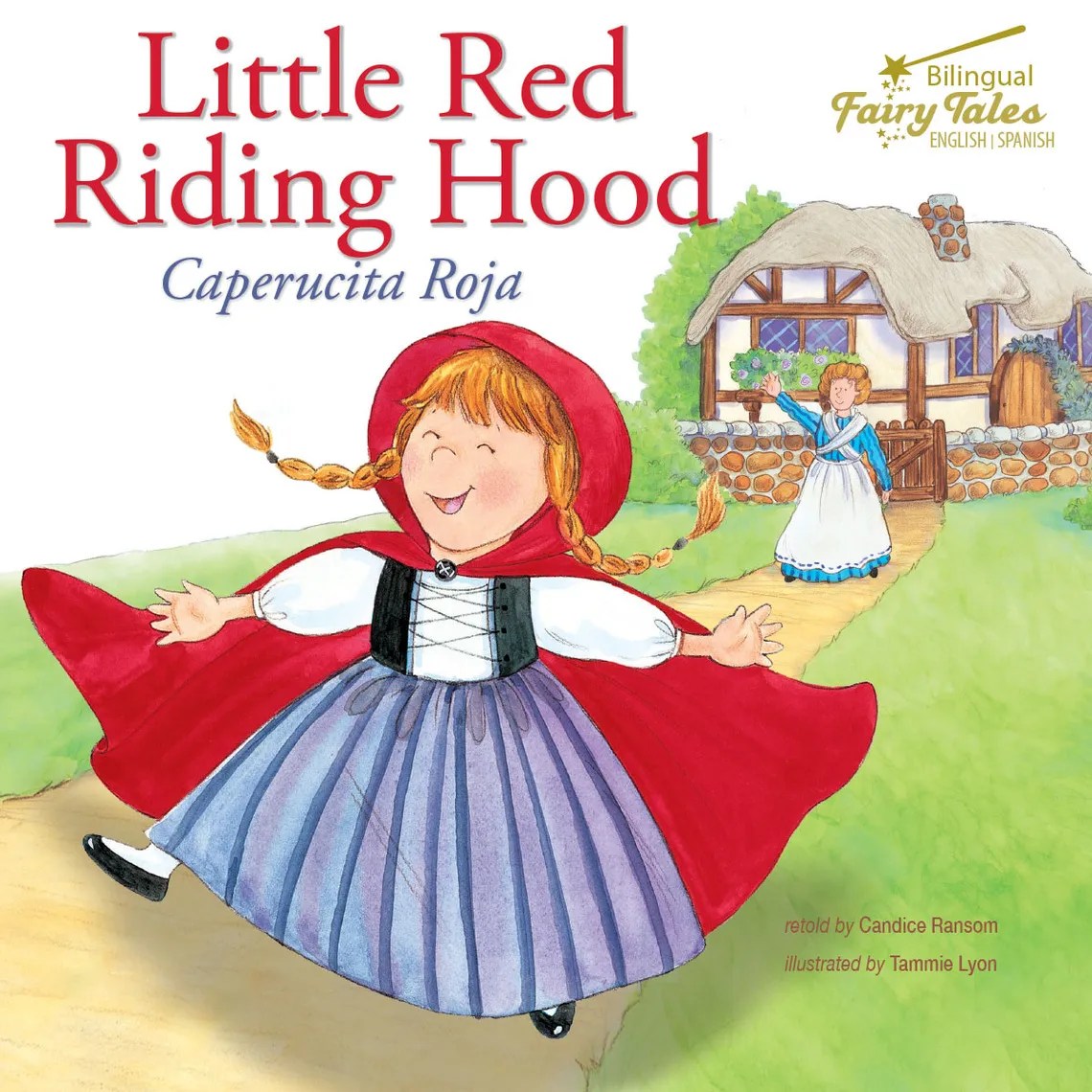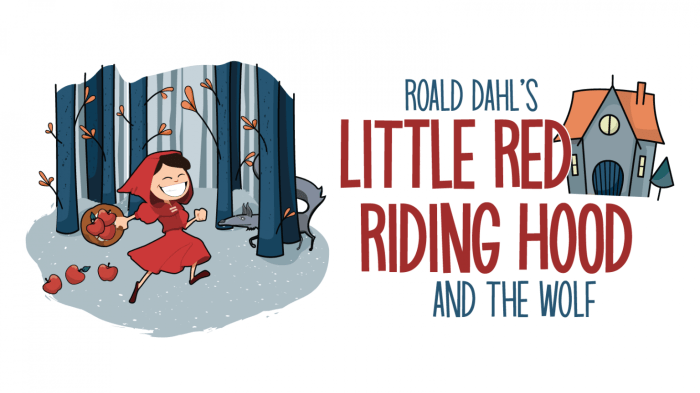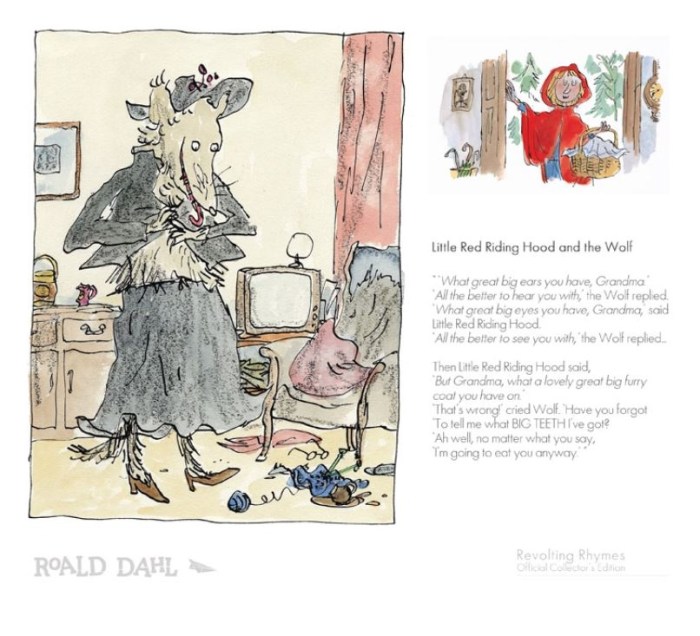Little red riding hood and the wolf roald dahl – Roald Dahl’s reimagined fairy tale, “Little Red Riding Hood and the Wolf,” presents a captivating and thought-provoking literary experience. This analysis delves into the intricate characterization, potent symbolism, and profound themes embedded within Dahl’s masterful storytelling, offering a fresh perspective on a beloved classic.
Characterization

Little Red Riding Hood is portrayed as a naive and innocent young girl, while the Wolf is depicted as a cunning and predatory creature. Little Red Riding Hood’s trusting nature and lack of awareness of the dangers of the forest contrast sharply with the Wolf’s manipulative and deceitful tactics.
Despite their contrasting personalities, both characters share a common trait: their vulnerability. Little Red Riding Hood is vulnerable due to her innocence and naivety, while the Wolf is vulnerable because of his dependence on deception and trickery.
Similarities
- Both characters are solitary figures, isolated from the rest of society.
- Both characters are victims of circumstance, as Little Red Riding Hood’s encounter with the Wolf is a result of her mother’s illness, and the Wolf’s hunger drives him to deceive Little Red Riding Hood.
Differences
- Little Red Riding Hood is portrayed as a kind and compassionate character, while the Wolf is depicted as a selfish and cruel creature.
- Little Red Riding Hood is ultimately rescued by the Woodsman, while the Wolf is killed.
Symbolism
The story of Little Red Riding Hood is rich in symbolism, with many of the characters, objects, and events representing deeper meanings.
The color red is particularly significant in the story, as it is associated with danger, passion, and blood. Little Red Riding Hood’s red cloak is a symbol of her innocence and vulnerability, while the Wolf’s red eyes represent his predatory nature.
Symbolic Meanings, Little red riding hood and the wolf roald dahl
- The forest represents the unknown and the dangers that lurk within it.
- The grandmother represents the elderly and the wisdom that comes with age.
- The Woodsman represents strength and protection.
Themes: Little Red Riding Hood And The Wolf Roald Dahl
The story of Little Red Riding Hood explores several important themes, including the dangers of naivety, the importance of caution, and the power of good over evil.
The story also reflects the social and cultural values of the time period in which it was written, such as the importance of obedience to elders and the dangers of straying from the path.
Main Themes
- The dangers of naivety
- The importance of caution
- The power of good over evil
- The importance of obedience to elders
- The dangers of straying from the path
Structure
The story of Little Red Riding Hood follows a traditional fairy tale structure, with an introduction, rising action, climax, falling action, and resolution.
The introduction sets the scene and introduces the main characters. The rising action follows Little Red Riding Hood’s journey through the forest and her encounter with the Wolf. The climax occurs when the Wolf devours Little Red Riding Hood and her grandmother.
The falling action follows the Woodsman’s arrival and the rescue of Little Red Riding Hood and her grandmother. The resolution ends the story with the Wolf’s death.
Structural Elements
- Introduction: The story begins with Little Red Riding Hood’s mother sending her to her grandmother’s house with a basket of food.
- Rising action: Little Red Riding Hood encounters the Wolf in the forest. The Wolf tricks Little Red Riding Hood into leaving the path and going to her grandmother’s house.
- Climax: The Wolf devours Little Red Riding Hood and her grandmother.
- Falling action: The Woodsman arrives and kills the Wolf. Little Red Riding Hood and her grandmother are rescued.
- Resolution: The story ends with the Wolf’s death.
Setting

The story of Little Red Riding Hood is set in a dark and mysterious forest. The forest is a dangerous place, filled with wolves and other predators. The setting of the story contributes to the overall mood and tone of the story, creating a sense of suspense and danger.
The story also reflects the social and cultural values of the time period in which it was written, such as the importance of staying on the path and the dangers of straying from the path.
Setting Elements
- The forest: The forest is a dark and mysterious place, filled with wolves and other predators.
- Little Red Riding Hood’s house: Little Red Riding Hood’s house is a safe and comfortable place.
- Her grandmother’s house: Her grandmother’s house is a dangerous place, as it is located in the forest.
Literary Devices
The story of Little Red Riding Hood uses a variety of literary devices, including foreshadowing, symbolism, and irony.
Foreshadowing is used to hint at the events that will happen later in the story. For example, the Wolf’s red eyes are a foreshadowing of his predatory nature.
Symbolism is used to represent deeper meanings. For example, the color red is associated with danger, passion, and blood.
Irony is used to create a sense of humor or surprise. For example, the fact that Little Red Riding Hood is eaten by the Wolf is ironic, as she is the one who is supposed to be afraid of him.
Literary Devices
- Foreshadowing: The Wolf’s red eyes are a foreshadowing of his predatory nature.
- Symbolism: The color red is associated with danger, passion, and blood.
- Irony: The fact that Little Red Riding Hood is eaten by the Wolf is ironic, as she is the one who is supposed to be afraid of him.
Comparison to Traditional Version

Roald Dahl’s version of “Little Red Riding Hood” differs from the traditional version in several ways.
In the traditional version, Little Red Riding Hood is rescued by a huntsman. In Dahl’s version, she is rescued by a woodcutter. In the traditional version, the Wolf is killed by the huntsman. In Dahl’s version, the Wolf is killed by the woodcutter’s axe.
Dahl’s version of the story also includes a moral, which is not present in the traditional version. The moral of Dahl’s story is that “it is not safe to talk to strangers.” This moral is reinforced by the fact that Little Red Riding Hood is eaten by the Wolf after she talks to him.
Differences from Traditional Version
- In the traditional version, Little Red Riding Hood is rescued by a huntsman. In Dahl’s version, she is rescued by a woodcutter.
- In the traditional version, the Wolf is killed by the huntsman. In Dahl’s version, the Wolf is killed by the woodcutter’s axe.
- Dahl’s version of the story includes a moral, which is not present in the traditional version.
Detailed FAQs
What are the key differences between Dahl’s version and the traditional “Little Red Riding Hood”?
Dahl’s version subverts expectations by portraying Little Red Riding Hood as a cunning and resourceful protagonist, while the wolf is depicted as a cunning and manipulative predator.
How does the color red contribute to the symbolism of the story?
Red symbolizes danger, passion, and the loss of innocence, reflecting the perilous journey and transformation undergone by Little Red Riding Hood.
What is the central theme of Dahl’s retelling?
The story explores themes of female empowerment, the importance of self-reliance, and the consequences of underestimating one’s own strength.